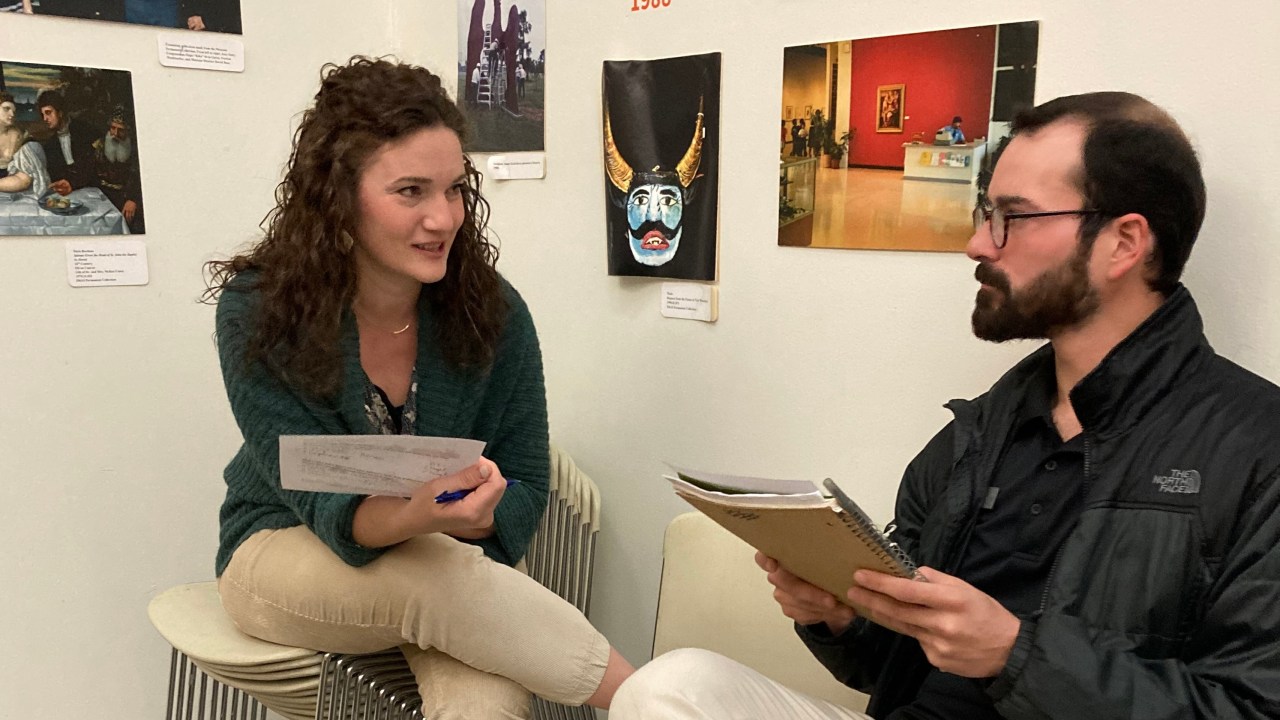
I’ve been in close communication with some of the museum directors using CFM resources—including TrendsWatch reports and the AAM Strategic Foresight Toolkit—to inform their planning and management. Today, Ann Fortescue, Executive Director of the International Museum of Art and Science in McAllen, Texas, tells us how the practice of scanning (reading the news) she developed with the help of the toolkit, reinforced by TrendsWatch coverage and input from her staff, sparked an IMAS effort to support the mental health of staff.
–Elizabeth Merritt, Vice President Strategic Foresight and Founding Director, Center for the Future of Museums, American Alliance of Museums
My news feeds have recently brought me a lot of articles on brain science and mental health, both in and out of museums. These external stories have reinforced internal feedback from the IMAS Staff Idea Board, a whiteboard we use to source anonymous feedback from staff on museum-relevant topics, which have had a growing number of suggestions hinting at an unmet need for mental wellness.
The need to provide support in the workplace may be especially important at IMAS, where staff are almost entirely Hispanic/Latino, one of the groups least likely to seek mental health services. As the Executive Director, I felt it was incumbent on IMAS to devote time and resources to mental health, but as one of two non-Hispanic/Latino people on staff, I was also aware that I needed to do this from a place of listening and responding, rather than telling staff what we should do.
In deciding what approach we should take, I thought about Cambio, the year-long professional development program IMAS is participating in, which encourages us to take risks and accept that we may misstep the first couple of times. I embraced this spirit of experimentation in developing discussion questions for one of our monthly all-staff meetings, using the “Critical Questions for Museums” and “Framework for Action” in the 2022 TrendsWatch chapter “Mental Health for All” as starting points.
Staff comments on our Idea Board helped frame the discussion questions in a conversational tone that didn’t sound judgmental, intrusive, or prescriptive. I asked staff to gather in small groups of three to four people and share with each other their answers to the following questions:
- What do you do to put yourself in a good mood?
- When you feel overwhelmed or anxious, what helps you get through these difficult feelings?
- What do you do to recover after a difficult encounter with a museum visitor?
- What can we do at IMAS to create a healthy work culture to support good mental health for our staff?
For the last question, I asked staff to write their responses on sticky notes and post them on a big sheet of paper. For the next twenty minutes, there was so much lively discussion that it took me several tries to get everybody back together. This reassured me that I had been right to raise this important topic with the staff. I acknowledged the discomfort many people have in talking about mental health, expressed gratitude for how engaged everyone was in the discussion, and promised I would put all the sticky note comments together and share them at a future meeting.
The sticky notes fell into four groups of ways the museum can support staff mental health:
- Physical space: Staff want places to be both alone and together in areas with comfortable furniture and soft lighting.
- Things to do together: When they are together, staff are seeking active experiences like deep breathing exercises, field trips to other museums or nature centers, and social outings.
- Activities for just staff at the museum: for example, “staff discussions on topics we worry about, encounter daily, difficult topics and situations,” and staff-led exhibit talks.
- Promoting and reinforcing behaviors that support mental health.
This last category—behaviors—was the most revealing, and the suggestions identified areas for improving the work culture overall. Nearly all addressed how we could communicate better, including allowing venting without repercussions, sharing opinions and feelings with each other, showing respect for each other, and having an open-door policy for honest conversations at all levels. The most poignant comment was “acceptance for crying, which can be healthy for stress.” This is a signal of a growing and generational societal shift in the acceptance of emotions in the workplace, rather than the suppression of expression many of us, especially women, were counseled to follow if we ever aspired to leadership positions.
Staff candidly shared what we could do immediately to promote mental wellness. Some were small things, like having meals and snacks available more often, scheduling therapy dog visits, promoting more communication with each other, and dedicating time for cleaning workspaces. (“Memes placed around [staff areas] to boost staff morale” was the simplest and most playful suggestion.) Others, like the four-day work week (discussed in this year’s TrendsWatch), would require big operational shifts. This prompted a broader discussion about work time and non-work time, as we begin an overhaul of our Employee Handbook.
Having this initial staff feedback bolsters my confidence to revisit topics related to mental health and implement suggestions to create a healthy work culture to support good mental health for our staff. As explored in this year’s TrendsWatch: Building the Post-pandemic World, the disruptions of the past three years have taken a terrible toll on staff. As we recover, IMAS is taking the opportunity to create a better work culture that aligns with our values, fosters mental health, makes us a better employer, and positions the museum to retain and attract an engaged staff.









This made ne think of this section from “Building Resilient Organizations” (https://forgeorganizing.org/article/building-resilient-organizations) by Maurice Mitchell.
“Discerning what is yours to hold and what is the collective’s is an essential life skill and fundamental to organizational work, collaboration, and meaningful engagement of others. Organizations generally do not have the specialized skills to provide emotional or spiritual healing. Workplaces can provide a salary, benefits, paid time off, and other resources to help individuals access the support and care they require. Workplaces can also promote a culture of care and encourage individuals to care for themselves. Workplaces and colleagues cannot replace medical professionals, spiritual supports, or other devoted spaces of care.
This is also true for non-professional spaces. Your comrades can provide support, foster a caring environment, or help you out when you’re in distress. They cannot heal you or salve long-standing traumas. It is natural for us to turn to those closest when we’re in pain. It is an indictment of the larger systems in our society that abundant mental health and healing resources are not available to most of us. There are several groups now filling that void in a culturally competent manner, such as Nqttcn.com, beam.org, fireweedcollective.org, generativesomatics.org, and sinsinvalid.org.
Emotional intelligence is a capacity an organization can and should embody. But no organization can take on the emotional labor that is squarely in the domain of the individual. This distinction is critical. Additionally, discomfort is part of the human condition and a prerequisite for learning. Violence and oppression are to be avoided but not discomfort. The ability to discern the difference is a form of emotional maturity we should encourage.”